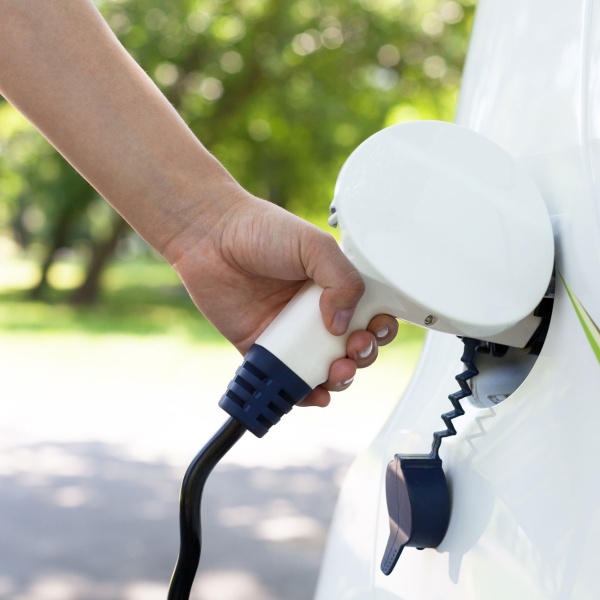Tackling Climate Pollution
Cars & trucks on Minnesota roads are the #1 source of climate pollution in our state.
Clean Cars Minnesota is an initiative to tackle climate pollution and decrease Minnesota’s emissions of greenhouse gases. These vehicle emissions standards will reduce transportation pollution from new cars and light-duty trucks and increase the number of pollution-free vehicles for sale. Minnesota has joined 14 states and the District of Columbia in adopting these standards.
Details & Background on Clean Cars
CLEAN CARS Status
The rule was officially adopted on Monday, July 26, 2021 and will go into effect on January 1, 2024.
As part of the rulemaking process, an Administrative Law Judge ruled the Minnesota Pollution Control Agency's (MPCA) Clean Cars proposal met the requirements of the rulemaking process and was reasonable and necessary. However, some state legislators opposed the rule and introduced multiple bills to repeal the agency’s authority to regulate clean air.
Conservation Minnesota fought against those bills and helped educate the public while legislators threatened to shut down state parks if Clean Cars was not delayed or repealed. The Clean Cars rulemaking made it successfully through the legislative session. See how your legislator voted on the issue.
Public Information Session Recording
Learn more about the Clean Cars rule from a recorded MPCA public information session originally held on January 20, 2021.
Why we need Clean Cars Minnesota
-
To Protect Our Health & Improve Air Quality
Gasoline and diesel vehicles emit climate change-causing pollution and particulate matter into our air. Every year in Minnesota, poor air quality contributes to 2,000 to 4,000 premature deaths, 500 hospitalizations, and 800 emergency room visits. And these impacts are not distributed equally. Vehicle pollution has a disproportional impact on communities of color and low-income households. Adopting this rule would help reduce exposures for vulnerable and under-resourced communities. -
To Give Minnesota Consumers More Choices
Automakers have announced plans for dozens of new electric vehicles in the next 5 years, including 20 crossover vehicles, SUVs, and pick-up trucks. However, in Minnesota, you can currently find only about half of the electric vehicles on the market. Minnesota car buyers have limited electric vehicle options because automakers have prioritized states with advanced Clean Car Standards. A recent study found that 6 in 10 prospective car buyers in Minnesota are interested in electric cars, trucks and SUVs. The survey also found that 66% of prospective Minnesota car buyers want automakers to provide more types of electric vehicles, like SUVs, pickup trucks, and minivans. -
To Save Minnesotans Money
As a fuel source, electricity is less expensive, and the pricing is more stable than gasoline. Electric vehicles are also 3 to 4 times more efficient than internal combustion engine vehicles. Maintenance and repair costs can be 60% lower due to simpler mechanics. Adopting the Clean Car Standard would save the average Minnesotan family nearly $3,000 by 2030. -
To Help Grow Minnesota’s Economy
The economic downturn caused by the pandemic provides Minnesota an opportunity to rethink the way we rebuild a more sustainable, equitable, and carbon free economy. Clean Car standards and the charging infrastructure needed to support EVs will help build back our economy. A study by the Union of Concerned Scientists found that the money Minnesota families would save and pump back into the economy would get people back to work and create nearly 13,000 new jobs.
Building on Existing State & Federal Policies
The Federal Clean Air Act, signed into law in 1970 by Richard Nixon, included clean car standards to reduce harmful climate change-causing pollution from the transportation sector. Supported by automakers, conservationists, national security groups, among others, the standards set fuel economy and climate pollution emission targets, based on vehicle size, for new cars and trucks sold in the United States.
States like Minnesota have the option to either follow the minimum EPA standards or voluntarily adopt stronger standards that provide better protection for air and water.
In 2007, the bipartisan Next Generation Energy Act was signed into law by Minnesota Republican Governor Pawlenty, requiring an 80% reduction in emissions by 2050. According to the latest state-level data, Minnesota’s reduction efforts must be accelerated to avoid the worst impacts of climate change across the state. Clean Cars Minnesota will help Minnesota fulfill the promise it made nearly 15 years ago, by getting us back on track to climate leadership.
THE Two Components Of Clean Cars
- Low emission vehicle standard (LEV)—Requires auto manufacturers to reduce vehicle emissions from greenhouse gases and other pollutants that harm human health.
- Zero-emission vehicle standard (ZEV)—Requires auto manufacturers to provide zero-emission vehicles for sale to the public.


